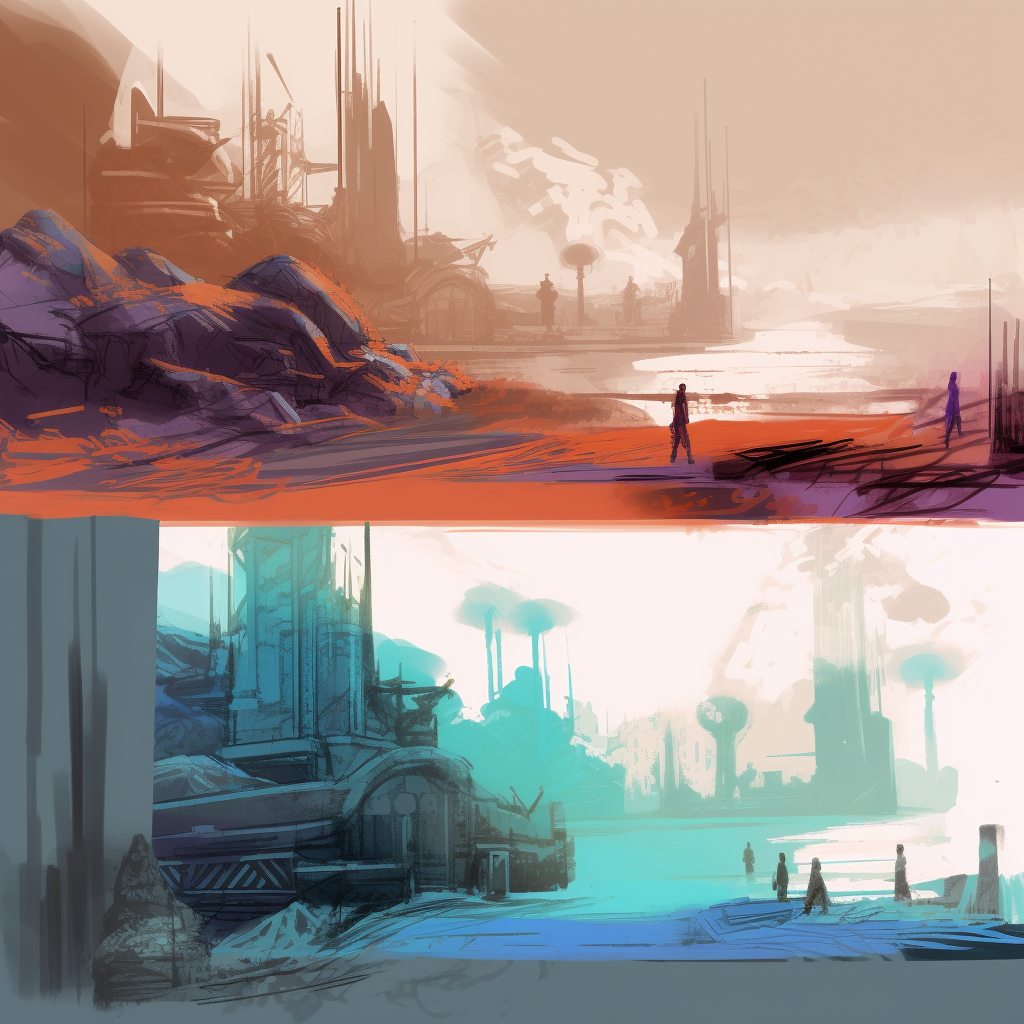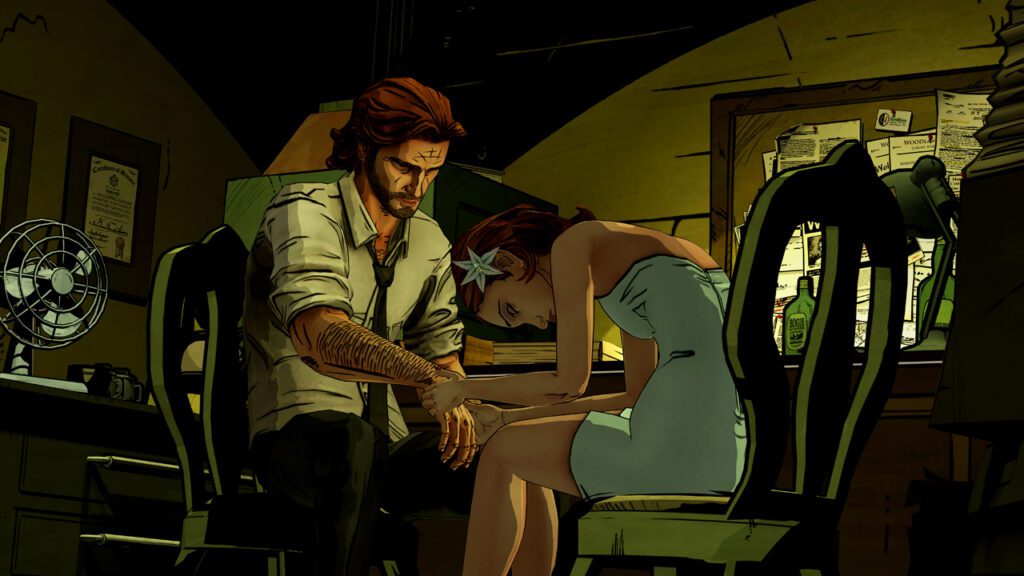Game development, like any other creative industry, comprises various areas that work together to produce the magic players experience on their screens.
At its core, the gaming industry revolves around three essential pillars: game design, programming, and art, and neither can work without the others. Among these, narrative game designers hold a unique and irreplaceable position in the development pipeline.
Throughout this article, we’ll explore their role in game development, shedding light on the required knowledge and skills to take on this challenge. We’ll also explore the key elements behind games with awesome narrative design.
What’s the role of a narrative game designer?
The narrative game designer holds a crucial role in video games, and their responsibilities cover much more than just writing dialogues and putting words on paper.
Their primary duty is to be the advocate for the game’s story, script, and dialogues, ensuring that the narrative blends and gameplay mesh well together by translating high-level story concepts into interactive game experiences.
To achieve memorable results, the key is understanding what the story needs and how it fits into the game. Narrative game designers also have to know what makes their players tick, using and tuning their techniques to elicit emotions – positive or otherwise – from them towards what’s happening within the game.
Beyond the art of the written word, these professionals also tinker with visuals and sounds. For example, they might have to assemble and edit prototypes of sounds and animatics (roughly speaking, it’s an animated storyboard, which usually comes accompanied by a soundtrack and crude sound effects to help artists get an idea of the intended result). These resources help set the atmosphere and the emotional tone of the game.
Moreover, they also develop outlines, synopses, and scripted content, revising and refining the work of other departments to ensure they’re aligned with the intended vision.
While often referred to as writers, they are the go-to experts for everything related to the game’s universe and plot, helping the actual writers by adapting their material to fit the game’s context and making its concepts easier for them to understand.
In other words, narrative game designers are the precious link between storytelling and game design, ensuring the music and sound design perfectly align with the intended gameplay experience.
Required knowledge and skills to work as a narrative game designer
As seen above, the role of a narrative designer demands a unique mix of knowledge and skills. At the heart of it all lies a way with words, as it’s the bedrock of crafting engaging narratives. But that alone is not enough: they must also possess a deep understanding of how to make players feel something, which is an art in itself.
Narrative game designers should be well-versed in creating concept art and storyboarding. They are visual elements that help translate the written narrative into visual and interactive experiences players will love. Familiarity with cinematic creation tools is another essential skill as it enables them to direct, tweak, and/or create impactful storytelling sequences within the game.

Taking on this role also requires a great deal of teamwork and communication skills. As the bridge between storytelling and game design, narrative designers will be in close contact with other team members, so they must be able to translate their narrative vision to fellow artists and developers, giving feedback when needed while ensuring everything resonates with the game’s audience. It’s a lot to juggle!
Adding to this, narrative game designers can benefit a lot from understanding how to build a community and engage with fans. While not a strict requirement, fostering a dedicated player base will make sure your game will always have some presence on social media, which is essential to achieving high player counts and revenue.
As we all know, the game industry often relies on tight schedules and deadlines, with crunches being commonplace the closer a game is to its release. To avoid going through these compulsory overtime weeks, the ability to work under pressure and meet deadlines on time is essential, making organizational and time management skills a must.
Last, but not least, having a deep understanding of the game’s genre allows narrative designers to create better and more engaging stories that complement the gameplay. Keeping a close watch on innovations and industry trends, especially on the most anticipated AAA games and the best-rated indie titles, can be the difference between a good and a great narrative design.
What lies behind a great narrative design?
At its core, narrative design is about crafting stories that complement a game’s experience and take it to the next level.

Let’s start with the golden rule in narrative game design: put gameplay first. While storytelling is a crucial aspect of modern games, it should always complement and enhance its gameplay rather than take the spotlight. After all, good stories won’t matter if players quit shortly after starting out.
One of the key aspects of exceptional narrative design is character development. By involving multidimensional characters players can connect with, narrative designers can make their journey more engaging and emotionally charged. These characters are also the ones driving the story forward, advancing it ever so slightly with new information or quickly by slamming the player with a plot twist.
Another crucial element is worldbuilding, the art of creating the stage on which the story unfolds. Narrative designers, concept artists, and other game design-related professionals work together to fill game worlds with their own histories, cultures, religions, and lore. You can see great world-building examples in many highly acclaimed games, like Skyrim, Cyberpunk 2077, and Destiny 2.
Properly fine-tuning the game’s narrative arc is essential for maintaining player engagement. Make the story’s progression too quick, and you might overwhelm the player; too slow, and they might get bored and quit before things get really interesting.
Don’t make the plot too predictable, but don’t go full Westworld season 2 and make things overly complex to digest – make sure to leave some breadcrumbs to reward more attentive players! Build towards a satisfying climax through a series of twists and turns, ensuring the pacing feels awesome and players are invested from start to finish.
The player agency has a significant role in narrative design. Giving them meaningful choices that might alter the story’s outcome adds layers of immersion and replayability, granting them a reason to come back.
Also, make sure to embrace thematic elements! They provide greater depth and meaning to the story, referencing or addressing universal concepts like love, sacrifice, and redemption, giving players something to ponder long after they’ve beaten the game. While better suited for the main characters, secondary ones can be used as devices to convey these concepts and drive the story forward.
Finally, as a narrative game designer, iteration and refinement are constant processes: you will need to ask and attentively listen to feedback, especially from testers, and adjust the narrative’s pacing, storytelling, and other aspects accordingly.

Conclusion
As seen throughout this article, the narrative game designer plays an essential role in creating the stories in the games we play. With responsibilities that range from planning the storyline to breathing life into multidimensional and relatable characters, these professionals are the architects of immersive gaming experiences.
Their involvement extends far beyond writing-related endeavors, though. They’re constantly collaborating with artists, programmers, and other designers to bring the best possible story to life, which is only possible due to their deep understanding of player emotions and storytelling devices.
So, the next time you go on a gaming adventure, give narrative game designers the nod and remember them for their awe-inspiring work to make it an unforgettable experience.
As a leading independent game studio, we at Main Leaf understand the ins and outs of all things game development, including narrative design for games, which lets us create immersive worlds and memorable narratives.
What’s your vision? Whether you’re an aspiring game designer with a brilliant concept or a seasoned professional looking for some extra hands for your project, we’re here to bring your dreams to life.
With our expertise and a passionate roster of 70+ experienced professionals, we can turn your concepts into critically acclaimed masterpieces. Don’t let your ideas lay dormant, contact us below to get started within 24 hours!

